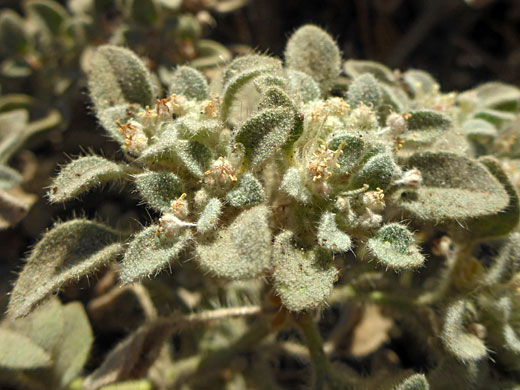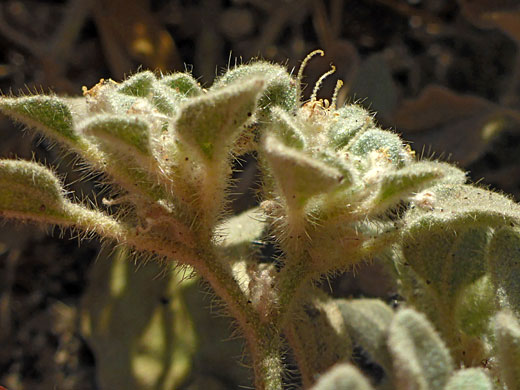Common names:
Turkey mullein, doveweed
Family:
Scientific name:
Croton setiger
Synonym:
Croton setigerus
Main flower color:
Range:
The Pacific states, and small areas of the adjacent states
Height:
Up to 7 inches
Habitat:
Open, dry places, including woodland, grassland, fields, deserts, dry washes and roadsides; up to 6,000 feet
Leaves:
Alternate, ovate, with rounded tips, up to 2.5 inches long, on stalks up to 2 inches
Season:
May to October
Croton setiger forms dense, low, mound-like clusters, a few inches high and up to 30 inches across. Leaves are densely covered with short, star-shaped hairs, and a few longer hairs; they are light green, sometimes with a faint pinkish tint. Leaf undersurfaces are more grayish.
Plants are monoecious, with the staminate inflorescence a cluster (two to ten flowers) at the tips of the stem branches, and the pistillate flowers at the lower leaf nodes, one to three per node. Male flowers are composed of five or six bristly sepals, no petals, and from six to ten exserted stamens, while the female flowers have no petals or sepals, just a bristly ovary with a single, unlobed style. Pistillate flowers are sessile, staminate on short pedicels.
Plants are monoecious, with the staminate inflorescence a cluster (two to ten flowers) at the tips of the stem branches, and the pistillate flowers at the lower leaf nodes, one to three per node. Male flowers are composed of five or six bristly sepals, no petals, and from six to ten exserted stamens, while the female flowers have no petals or sepals, just a bristly ovary with a single, unlobed style. Pistillate flowers are sessile, staminate on short pedicels.
All Contents © Copyright The American Southwest | Comments and Questions | Contribute | Site Map





